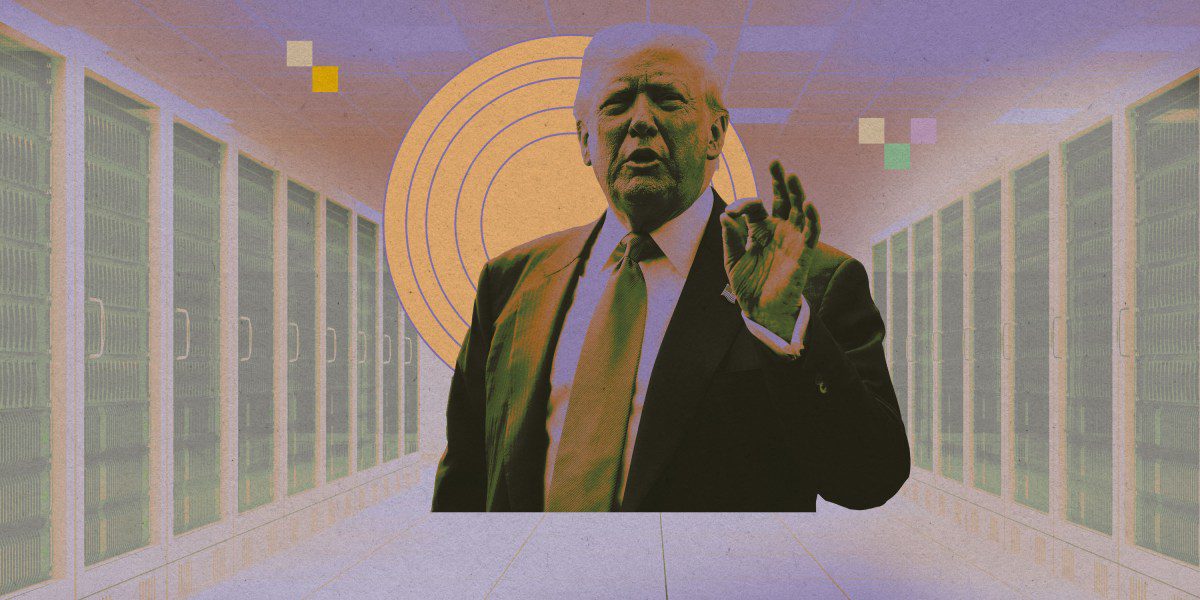America’s Future in AI: Are We Losing It?
On Wednesday, President Trump laid out a bold vision for America’s future in AI through three executive orders, a lengthy speech, and a detailed action plan. But let’s face it: while the headlines sound exciting, we should take a closer look at the reality behind these initiatives. The focus keyword here is America’s future in AI, and it’s worth diving into what’s at stake.
What’s on the Table?
So, what exactly did the President outline? The action plan includes a slew of proposed actions categorized into three main pillars: accelerating innovation, building infrastructure, and leading international diplomacy and security. Sounds impactful, right?
However, here’s where it gets sticky. Some of these recommendations seem more like lip service. They’re engineered to enrich big tech companies and serve specific ideological goals rather than genuinely advance our position in the global AI race.
Executive Orders vs. Action Plan
Here’s a rundown of the three executive orders that actually operationalize some of the action plan:
-
One aims at stopping “woke AI” by ensuring the government only uses large language models that are “truth-seeking.” Controversial, to say the least.
-
Two focuses on accelerating the construction of AI data centers, but this one is quite the catch—think waiving environmental protections and providing government grants to the wealthiest companies.
-
Three promotes exporting U.S. AI technology, hoping to reduce our reliance on counterparts from less friendly nations.
Now, while some in the tech industry cheered these moves—which could line their pockets—there’s a glaring issue: the very policies that made America a tech leader are being chipped away.
R&D Funding: The Backbone of Innovation
Let’s break down one of the pillars: investment in research and development (R&D). Historically, massive federal funding has been the life force behind successful AI advancements. Remember ChatGPT? That didn’t just spring up overnight; it was fueled by decades of taxpayer-funded research dating back to the ’50s.
But here’s the kicker: the current administration is slashing R&D budgets. Instead of pouring resources into this critical area, they plan to cut nondefense R&D by a jaw-dropping 36%! Sure, companies could fill the gap, but their research is generally targeted at boosting profits—not the national interest. How will that create breakthroughs that could shape society for decades?
Embracing Immigrants: The Key to AI Success
If we look at who’s really driving innovation, it’s often the brightest minds from around the world. A significant chunk of cutting-edge AI development is led by immigrants. For instance, Google’s transformer model, the backbone of technologies like ChatGPT, was created largely by researchers born outside of the U.S.
Yet, anti-immigration policies are already reversing the brain-drain effect that benefited America for decades. We’re losing top talent just when we need it most. What does that mean for America’s future in AI? A downturn in innovation and productivity, if you ask me.
Noncompete Agreements: The Innovation Killers
You might not think about it often, but noncompete agreements are stifling creativity and progress. They restrict talented individuals from freely moving to new ventures—think of the innovative sparks that could fly if brilliant minds weren’t bound by contracts!
California became a tech powerhouse partly because its laws prohibit these agreements, allowing talent to flow freely. Recent efforts, like those initiated under President Biden, aimed to ban noncompetes nationwide, but now they’re facing pushback. This could spell disaster for AI, particularly outside the Golden State.
Antitrust Actions: A Double-Edged Sword
One of the recent orders calls for reviewing antitrust regulations that allegedly “burden AI innovation.” But let’s take a step back. Robust antitrust policies have historically enabled newcomers to challenge established giants, fostering a fertile ground for innovation. By taking a step back now, we’re risking stifling growth in a sector that’s fundamental to our economy and society.
Why should we care? Because if big tech goes unchecked, we might end up in a place where innovation stalls—and that’s not where you want to be.
Wrapping it Up
In summary, if America wants to continue leading the world in AI, we’ve got to prioritize the principles that got us here: robust public investment, welcoming global talent, and a competitive market. Short-term industry profits can’t dictate our long-term strategy.
Honestly, America’s future in AI isn’t just a tech issue; it’s a national priority. So what’s your take? Do you think these executive orders will help or hinder our progress? Want more insights like this? Let’s keep the conversation going!
